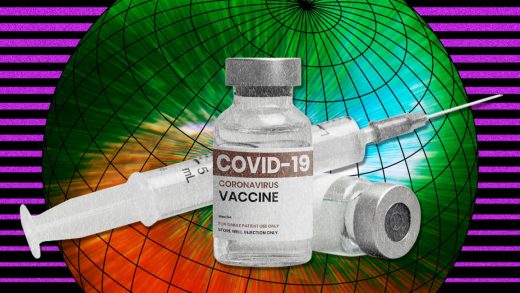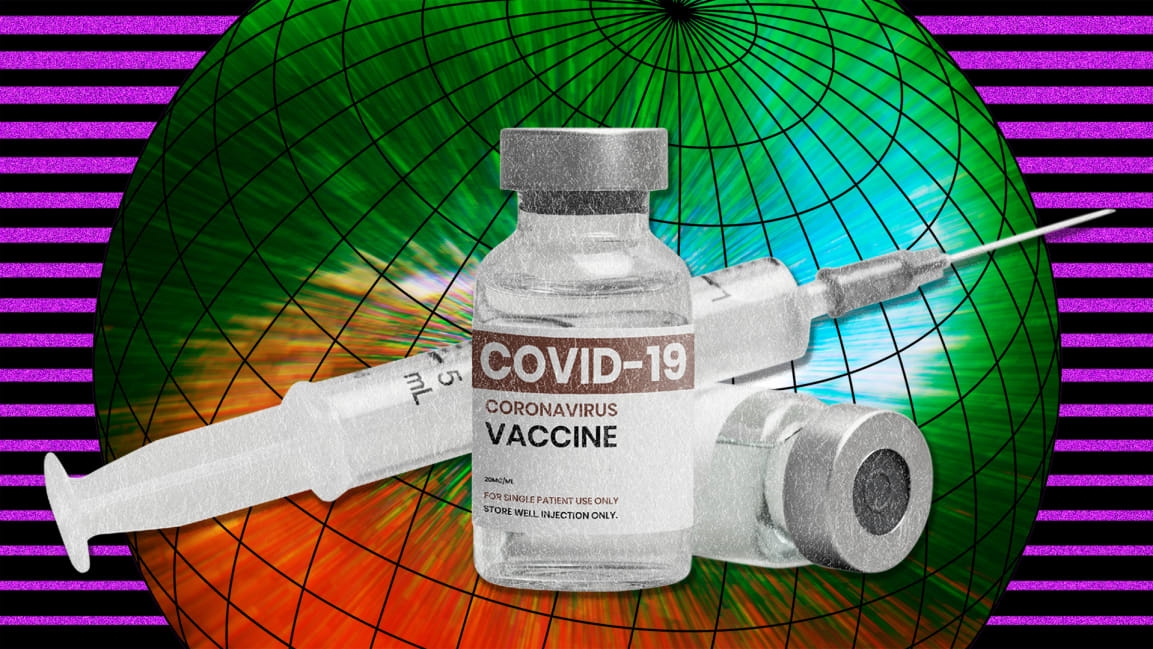What needs to happen now to get the whole world vaccinated?
One part of a solution—loosening intellectual property protections on vaccines—recently got closer to reality. The Biden administration now supports a waiver to international intellectual property rules that would help open up more vaccine manufacturing. A World Trade Organization agreement called TRIPS, or Trade-Related Aspects of Intellectual Property, requires WTO members to enforce IP protection; the waiver would temporarily lift those requirements for COVID-19 vaccines, making it easier to produce, export, and import cheaper generic versions. Countries could issue compulsory licenses for vaccine ingredients, so that any manufacturer could begin making, for example, the patented lipids use in mRNA vaccines. The waiver would also make it possible to export those products across national borders.
India and South Africa proposed the waiver last fall, but the U.S. opposed the idea at the time, as did the pharmaceutical industry. “The U.S. had opposed this waiver for months prior to Biden becoming president,” says Nicholas Lusiani, a senior adviser at Oxfam. “And that’s set the tone for many of our allies—Australia and New Zealand, different countries in Europe, and the U.K. Now that the U.S. supports entering into negotiations and collaborating with others to find a solution, other countries are going to start falling in place.” WTO members will need to negotiate the terms of the waiver and come to an agreement, but it’s much more likely that it will happen now. The European Union, for example, has opposed the waiver, but now says that it will consider it.
Pharma companies argue that IP isn’t the real challenge, saying that there’s limited technical capacity to scale up manufacturing. Bill Gates made the same argument when he talked to Fast Company last year—and because of the clout that the Gates Foundation has in the world of global health, countries moved to support COVAX, a mechanism for negotiating lower prices for vaccines for the developing world, rather than another program at the World Health Organization designed to push pharma companies to transfer their technology to other manufacturers.
It’s true that making a vaccine is more complicated than making a pharmaceutical drug, and involves a complex transfer of technology from the original company. It also requires a complex supply chain: Pfizer, for example, says that it works with 86 suppliers in 19 countries to get the 280 components needed for its COVID-19 vaccine. But removing IP barriers is a necessary first step to substantially scaling up production. Some global factories say that they have room to start manufacturing as soon as the tech can be transferred.
Drug companies also say that if they share their intellectual property, it will undermine the incentive to innovate in the future. But much of the innovation happened outside company walls: mRNA vaccines owe a debt to academic research, and the U.S. government poured billions into vaccine research and development. The Moderna vaccine was developed in partnership with the National Institutes of Health.
“An enormous amount of public money has gone into the development of these vaccines, and that also means that the commercial licenses for these products need to look very different,” Ellen?’t Hoen, a Dutch public health advocate, said in an earlier interview.
The U.S. government can also help fund new manufacturing capacity. PrEP4All, a nonprofit focused on access to HIV prevention and treatment that has also been advocating for global COVID-19 vaccine access, has analyzed what is needed to scale up production dramatically, and says that the U.S. could build facilities with capacity to vaccinate the entire world—16 billion doses, with each dose costing $2—for $4 billion, less than the country has been spending each day on COVID-19 relief. (The organization was inspired in part by past work that the U.S. did to expand global access to AIDS treatment.)
“The COVID relief bill that passed in March has $16 billion that was allocated for manufacturing scale-ups,” says James Krellenstein, executive director and a cofounder of PrEP4All. “And that’s sort of sitting in the Biden administration’s coffers right now.”
Facilities could be built relatively quickly. “In February of 2020, there were zero factories around the world that could make an industrial scale mRNA vaccine,” Krellenstein says. “The United States, with a bunch of public money, basically had Moderna and Pfizer and their contract manufacturers build new factories in six months or less, which is what the vaccine in my arm and probably yours came from. We actually did a pretty comprehensive analysis of every single factory that is making an mRNA vaccine, and we consistently find that they go from conception to first drug substance coming out of the plant in six months or less.”
The U.S. government could either repurpose existing drug production facilities or build new modular facilities—both things that could happen within months—either in the U.S. or in other parts of the world.
Countries like the U.S. can also donate extra doses of vaccines. But it’s not clear yet how much of the world can be covered with production from existing factories. Duke University’s Global Health Innovation Center has estimated that with just our existing capacity, more than 12 billion doses of vaccine could potentially be produced this year, enough to cover more than 70% of the global population if the doses are distributed equitably.
That may be unlikely, says Oxfam’s Lusiani, as rich countries potentially hold on to vaccines for adolescents and children. “Whatever surplus is left over will not be anywhere close to the amount needed, and there will be a temptation to give away less-effective vaccines,” he says. “Also, this could lead to donations of vaccines near their expiration date, as has already happened in Sudan, for example. Ultimately, donating 20 million doses, for example, can help 10 million people in a single point of time. But providing assistance to actually produce the vaccines sustainably over time will help us all as long as this pandemic lasts.”
Krellenstein and Christian Urrutia, his cofounder at PrEP4All, believe that manufacturing capacity won’t increase without an extra push from governments, since pharmaceutical companies won’t need as much capacity after the pandemic. “This represents a classic ‘market failure,’ in which market forces, absent government intervention, do not result in an optimal allocation of resources. In this case, private vaccine manufacturers are not properly incentivized to increase production capacity to meet global demand, especially when most of this unmet demand is for low- and middle-income countries . . . that are likely unable to pay a premium price for each dose,” they write in their report.
As new manufacturing scales up, it’s critical to build more support for distribution at the same time. But it’s possible, Krellenstein says, to vaccinate everyone globally by the middle of next year, far faster than current predictions. He argues that the facilities should make the Moderna vaccine, though efforts so far to vaccinate most of the developing world have focused on the AstraZeneca vaccine. The Moderna vaccine has a much higher efficacy. It’s relatively easy to adapt to new variants. It can be stored in regular refrigerators and freezers. And because the U.S. government helped develop and fund the vaccine, the government has leverage to make more use of it now.
We could have acted much sooner. “We learned that Pfizer and Moderna vaccines were 95% or 94% effective in symptomatic COVID-19 disease back in November,” Krellenstein says. “The number of people who have died from COVID has more than doubled. We are really in a situation where we are allowing tens of thousands of people every single night to die unnecessarily. And the myth that we can’t manufacture enough of these vaccines is just that. If we put the amount of money that we need behind this, we really could do it. I think it’s time that the U.S. government stands up and says we are going to support global manufacturing to rapidly end this pandemic.”
(46)



